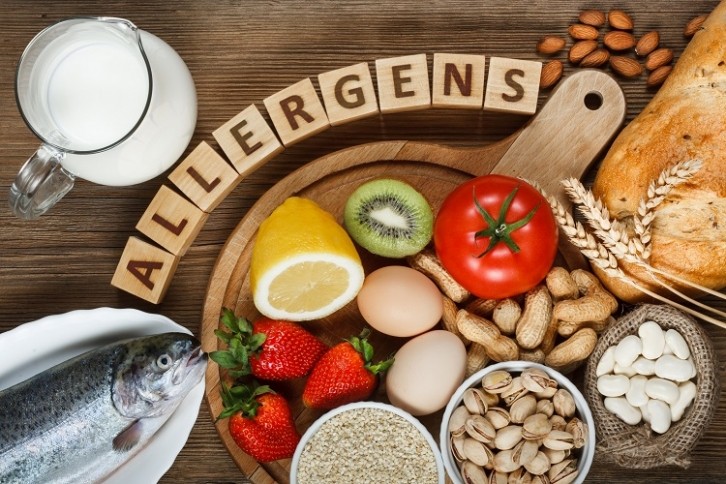Food allergy breakthrough: omalizumab displays promising results for kids and teens

Children and adolescents with food allergies have an improved tolerance to various foods when taking the drug, omalizumab. That’s according to the planned interim analysis of an advanced clinical trial, testing the drug’s impact on food allergies. The results of the study, sponsored and funded by the National Institute of Allergy and Infectious Diseases (NIAID), is potentially lifechanging to the estimated 220 million people affected by food allergies globally.
Why finding a treatment for food allergies is so important
Food allergies affect an estimate 2.5% of the world’s population. At the lower end of the spectrum, an allergic reaction can present mild symptoms to the sufferer, such as skin irritation or sneezing. However, at their most severe, a food-related allergic reaction can cause a threat to life through anaphylaxis, a whole-body response that can impair breathing, cause a dramatic drop in blood pressure and affect the heart rate. Anaphylaxis can come on within minutes of exposure to a trigger food.
“Allergic diseases, as a whole, including asthma, allergic rhinitis, skin allergies and food allergies make up one of the most common groups of chronic diseases in the EU. The prevalence of allergic disease has been growing in Europe for more than 50 years,” a spokesperson for the European Commission told FoodNavigator.
“Today, they affect over 150 million Europeans. Moreover, allergies are the most common non-communicable disease in children and represent the main cause of children's emergency visits and hospitalisations.”
What is omalizumab?
Omalizumab is in a class of medications called monoclonal antibodies. It works by blocking the action of a natural substance within the body, which causes certain allergic reactions, such as allergic asthma, nasal polyps, and hives. The laboratory-made antibody, is now being reviewed by the Food and Drug Administration (FDA) for a supplemental biologics license application to allow it to be administered for food-allergy treatment, based on this interim analysis of the NIAID trial.
In addition to NIAID funding, the trial is being supported by Genentech, a member of the Roche Group, and Novartis Pharmaceuticals Corporation. The two companies collaborate to develop and promote omalizumab, marketed as Xolair, and are supplying it for the trial.
How is the trial conducted?
The multi-stage trial, titled Omalizumab as Monotherapy and as Adjunct Therapy to Multi-Allergen OIT in Food Allergic Children and Adults (OUtMATCH), is being conducted at 10 locations across the United States.
The first stage of the study was designed to assess the efficacy of omalizumab in increasing the amount of food it takes to cause an allergic reaction, thereby reducing the likelihood of reactions to small amounts of food allergens in the event of accidental exposure. The study team enrolled children and adolescents aged 1 to 17 years and adults aged 18 to 55 years. All participants had a confirmed allergy to peanuts and at least two other common foods, including milk, eggs, wheat, cashew nuts, hazelnuts and walnuts.
In the planned interim analysis, the study’s independent Data and Safety Monitoring Board (DSMB) examined data on the first 165 children and adolescents who participated in the first stage of the trial. Using strict criteria, the DSMB found that study participants who received omalizumab injections could consume higher doses of peanuts, cashew nuts, eggs and milk, without experiencing an allergic reaction, compared with those participants who had received placebo injections. Based on the favourable results, the DSMB recommended halting enrolment into the first stage of the trial. NIAID accepted the board’s recommendation.
More detailed information on the findings is due to become available when they are published in a peer-reviewed journal.
Food allergies are firmly under the microscope
Food allergies have not gone unnoticed by the food industry, with research into ways to make various foods safer for all, gaining widespread attention and becoming the focus of numerous studies. Just recently, researchers at Sheba Medical Center in Israel, created a specialised peanut variety which loses its allergenicity when cooked. Research by Flinders University and SAHMRI in Australia also found that boiling peanuts for up to twelve hours, which affects the protein structure and allergic properties of peanuts, and then feeding them to peanut-allergy sufferers could help in desensitisation.
Food-allergy numbers are on the rise
The findings are significant, because according to the World Allergy Organization (WAO), the prevalence of food allergies has been increasing, leading to what is being termed the ‘second wave of the allergy epidemic’. The ‘first wave of the allergy epidemic’ referred to the dramatic rise in the numbers of asthma, allergic rhinitis and eczema sufferers.
“It is a significant public health issue and a considerable financial burden on affected individuals who require ongoing medical care,” notes the WAO.
“The prevalence and patterns of food allergies are highly variable in different parts of the world. In some developed economies 1 in 10 infants now have a challenge-proven Immunoglobulin E (IgE) mediated food allergy. Although there is a lack of large studies in the developing world, similar trends are anticipated from the currently published data.”
Source: Omalizumab as Monotherapy and as Adjunct Therapy to Multi-Allergen OIT in Food Allergic Participants (OUtMATCH)
Published online: 8 December 2023
DOI: https://clinicaltrials.gov/study/NCT03881696
Authors: National Institute of Allergy and Infectious Diseases (NIAID)






















